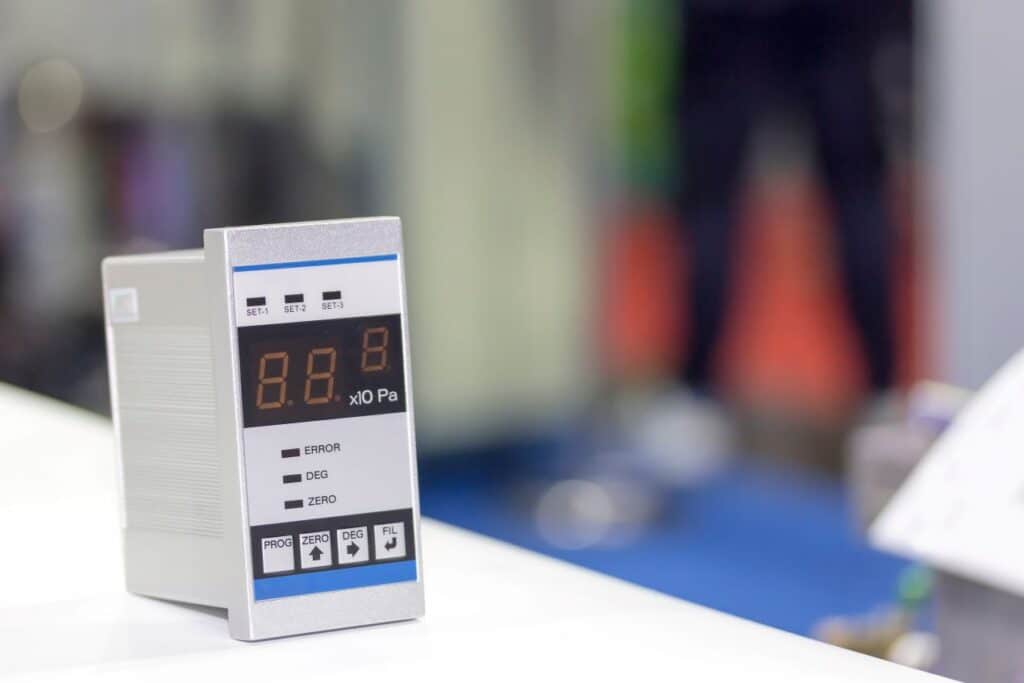In industries where vacuum processes are integral, selecting the correct vacuum gauge is crucial for accurate measurements, operational safety, and overall efficiency. Vacuum gauges measure pressure in environments with sub-atmospheric levels and are critical in sectors such as manufacturing, scientific research, and semiconductor production. This article reviews the most common types of vacuum gauges and their specific applications, offering insights to help businesses make informed choices.
Understanding the types of vacuum gauges
Each type of vacuum gauge has unique characteristics, making it suited for specific applications and pressure ranges. Here’s a breakdown of commonly used vacuum gauges:
- Pirani Gauges
- Usage: Effective for medium to low vacuum applications.
- Industries: Electronics manufacturing, coating technologies, and vacuum furnaces.
- Advantages: Good sensitivity and continuous monitoring capabilities in low-pressure environments.
- Limitations: Limited to pressures around 10^−3 to 10^−4 mbar, making it less effective in high-vacuum situations.
- Thermocouple Gauges
- Usage: Suitable for low and medium vacuum monitoring.
- Industries: Frequently used in freeze-drying, vacuum packaging, and refrigeration.
- Advantages: Reliable and accurate in lower vacuum ranges, widely used for general applications.
- Limitations: Does not perform well in high-vacuum environments; best for pressures from 10^−3 to 1 mbar.
- Capacitance Manometers
- Usage: Ideal for applications requiring high precision and stability.
- Industries: Semiconductor manufacturing, thin-film deposition, and high-tech R&D.
- Advantages: Known for their accuracy and temperature resilience, making them suitable for various gas types without recalibration.
- Limitations: Typically higher in cost and limited in high-vacuum sensitivity.
- Ionization Gauges (Hot Cathode)
- Usage: Used in ultra-high vacuum (UHV) applications.
- Industries: Particle accelerators, space simulation chambers, and scientific research.
- Advantages: Can measure extremely low pressures (down to 10^−10 mbar), making it highly valuable for research and high-precision tasks.
- Limitations: Higher maintenance requirements and costs; sensitive to gas contamination, requiring careful handling.
- Cold Cathode Gauges
- Usage: Designed for high and ultra-high vacuum measurements.
- Industries: Mass spectrometry, high-energy physics, and space exploration.
- Advantages: Durable and able to measure low pressures (up to 10^−9 mbar) without a filament, making it suitable for high-stability applications.
- Limitations: Slower response times; gas mixtures can sometimes affect accuracy.

Choosing the right vacuum gauge based on application requirements
To select the optimal vacuum gauge, consider the pressure range, environmental conditions, and sensitivity needs specific to your application:
- Pressure Range Requirements
- Low Vacuum (1 to 1000 mbar): Pirani and Thermocouple Gauges are effective and economical options for processes like vacuum packaging and refrigeration.
- Medium Vacuum (10^−3 to 1 mbar): Thermocouple Gauges and Capacitance Manometers offer the necessary precision for applications like industrial vacuum furnaces.
- High and Ultra-High Vacuum (10^−9 to 10^−3 mbar): Ionization (Hot Cathode) and Cold Cathode Gauges are suited to high-precision needs in advanced manufacturing and scientific research.
- Sensitivity to gas types
- For applications with varying gas types, Capacitance Manometers offer stability across gases without recalibration, ideal for processes that require versatility.
- Ionization Gauges require specific calibration depending on the gas type, making them less versatile for diverse gas environments.
- Temperature and environmental conditions
- For high-temperature or chemically active environments, Cold Cathode Gauges are robust and handle extreme conditions better.
- In more controlled conditions with minimal temperature variation, Pirani and Thermocouple Gauges are both effective and economical choices.
- Maintenance and cost considerations
- Thermocouple and Pirani Gauges are cost-effective with lower maintenance needs, making them ideal for routine industrial use.
- High-end gauges like Ionization Gauges come with higher upfront costs and maintenance requirements but provide unmatched accuracy, essential in research and high-tech industries.

Checklist for choosing the right vacuum gauge
Here’s a quick checklist to help you select the best vacuum gauge based on your specific industry requirements. Mark the boxes to ensure all critical factors are considered before making a final choice.
| ✅ Criteria | Checklist |
| 🔧 Pressure Range | ☐ Identify the exact pressure range needed for your application (Low, Medium, High, or Ultra-High Vacuum). |
| ⚙️ Gauge Type Suitability | ☐ Choose a gauge type (Pirani, Thermocouple, Capacitance, Ionization, Cold Cathode) that fits your desired pressure range and application. |
| 🧪 Sensitivity to Gas Types | ☐ Ensure the gauge’s accuracy is reliable across any gas types you’ll be using. Consider recalibration needs if using diverse gases. |
| 🌡️ Temperature Stability | ☐ Confirm that the gauge can handle your operational environment’s temperature conditions (ambient, high-heat, etc.). |
| 💸 Cost and Maintenance Needs | ☐ Compare initial costs with long-term maintenance requirements for each gauge type. |
| 🏭 Industry-Specific Applications | ☐ Validate that the chosen gauge is recommended and tested for similar industries, such as electronics, R&D, or scientific research. |
| ⏱️ Response Time and Precision | ☐ Check that the gauge’s response speed and accuracy meet the precision requirements of your process. |
| 📊 Data Monitoring and Calibration | ☐ Ensure the gauge supports any data monitoring or calibration requirements, especially for high-precision environments like research labs. |
This checklist will help guide you through the essential considerations in selecting a vacuum gauge tailored to your business needs. Make sure each item is marked before purchasing to optimize accuracy, reliability, and cost-efficiency.
Maximizing efficiency and precision with the right vacuum gauge
Choosing the right vacuum gauge can significantly impact operational accuracy, safety, and product quality. By evaluating your application’s specific pressure range, sensitivity to gas types, environmental conditions, and budget, your business can select a gauge that supports both efficiency and long-term reliability. The right vacuum gauge investment not only enhances performance but also reduces downtime and optimizes overall process control, ensuring accuracy in critical industrial and scientific environments.
Images: A Stockphoto, Surasak, kinwun / Adobe Stock

